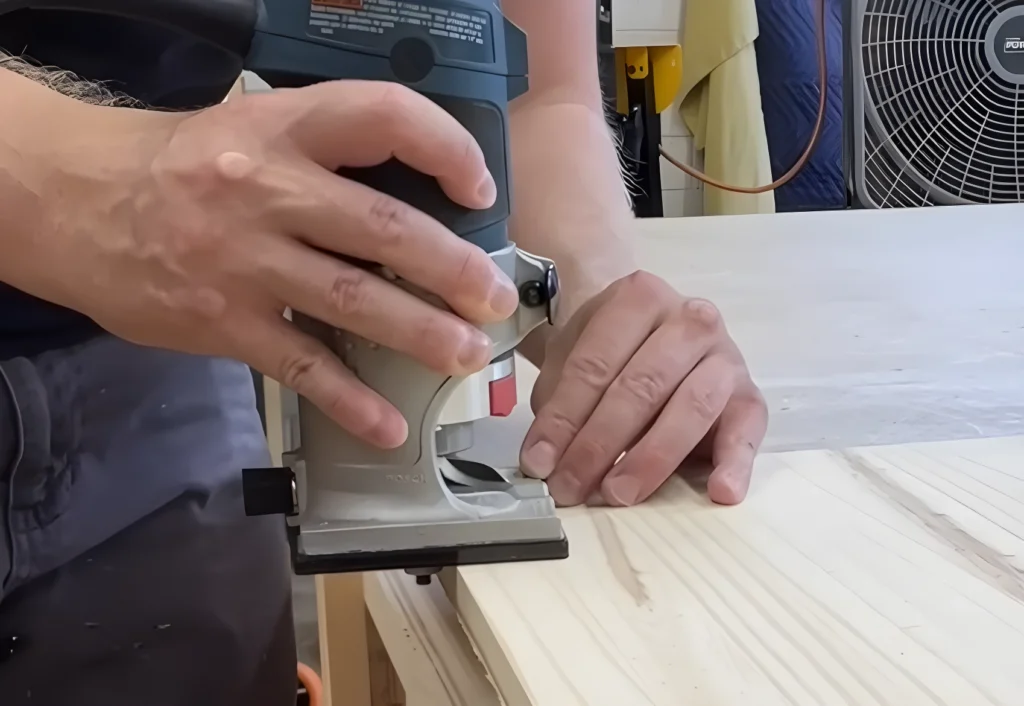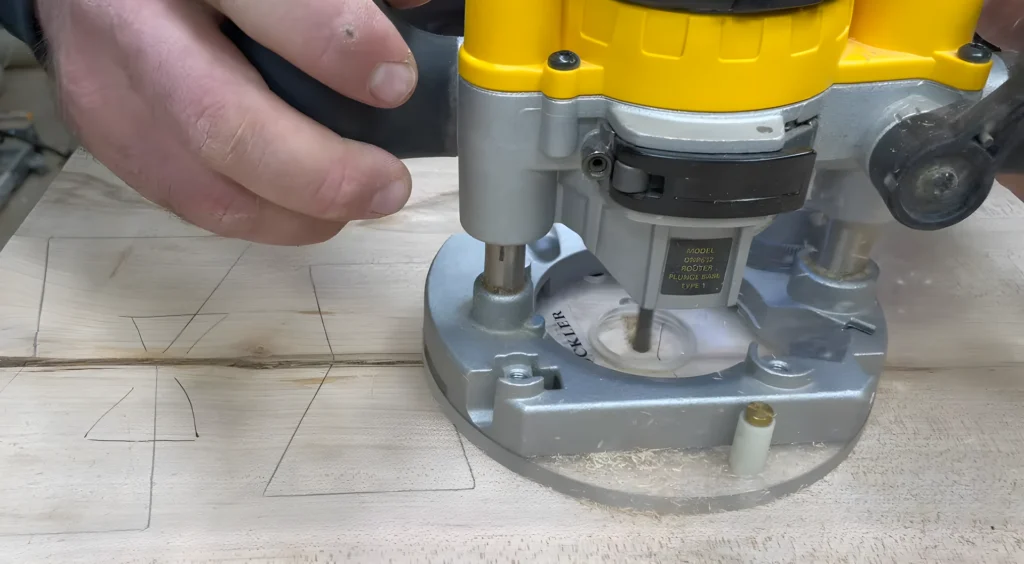Why I Didn’t Trust Routers at First
I used to think routers were for hobby woodworkers — people who built spice racks and carved signs in garages that never saw a speck of sawdust on the floor. I wasn’t against the tool, I just never saw the need. Most of my early jobs were rough work: siding repairs, deck rebuilds, subfloors in ancient farmhouses. A circular saw, a drill, and a sharp chisel got me through 90% of it.
Then one day I had to fit a dozen new doors with recessed hinges on-site, and I was burning hours with a chisel trying to get each one consistent. A carpenter I respected tossed me a fixed-base router and said, “Use this instead.” That five-minute demonstration taught me more than a year of fumbling ever could. The results were cleaner, faster, and — most importantly — repeatable.
The router doesn’t replace your hands. It extends them. Once you stop fearing it, it becomes the most precise brute force in your tool arsenal.
Now, I won’t leave for a trim job without it.
The Two Faces of a Router
There are two main types: fixed-base and plunge. Fixed-base routers are great for edge work, grooves, and consistent-depth routing. They’re more stable and predictable. Plunge routers let you lower the bit into the material while the base sits flat — great for mortises, inlays, or cutting in the middle of a panel.

I use a fixed-base router 80% of the time. It’s lighter, easier to control, and does what I need on most trim and cabinetry jobs. When I need to dive into the middle of a board — like cutting a slot for a tabletop fastener or a cord chase — that’s when I grab the plunge.

What a Router Actually Does
A router is basically a high-speed motor that spins a sharp bit. That bit cuts wood — edges, grooves, patterns, joinery. But the router itself doesn’t care about your intentions. It’ll tear out grain and launch splinters if you don’t guide it right.
To use a router well, you’ve got to understand three things:
- Feed direction: Always feed the router against the bit’s rotation, not with it.
- Grain awareness: Cutting with the grain gives clean edges; against it, you risk tear-out.
- Depth control: Take shallow passes. Don’t hog it all at once, or you’ll burn the wood and the bit.
When you feel resistance, listen. The wood is telling you something. Adjust.
Routers I’ve Used (and Still Use)
I’ve owned four routers over the years. These are the ones I keep coming back to:
- Makita RT0701C: A compact trim router. Lightweight, reliable, and versatile. I use this for rounding edges, flush trimming, and on small jobs where precision matters.
- DeWalt DW618: My go-to fixed-base router. Hefty enough for deep dados, but smooth enough for fine work. I like its soft start and depth adjustment.
- Old Ryobi plunge router: Loud, clunky, and awkward — but it gets the job done. I use it with a jig when I need to plunge mortises or cut slots for hardware.
The best router is the one that fits your hands and solves your problem. Don’t overthink the brand. Think about what you need to do — and choose accordingly.
Tips They Don’t Put in Manuals
- Double-sided tape beats clamps: When routing small parts, clamping gets in the way. Use strong tape to secure your workpiece to a backing board.
- Listen to the pitch of the motor: A struggling router makes a lower, rougher sound. When it sings, it’s happy. You’ll learn to hear the difference.
- Don’t wear gloves: You need bare-handed feel when guiding a router. Gloves dull your sense of feedback — and that’s how mistakes happen.
- Vacuum or blow the dust constantly: If you can’t see your line, you’re flying blind. I keep a small blower hooked up next to my router station.
- Learn to build router templates: A good template saves time and nerves. For repetitive tasks — like hinge mortises — I’d rather spend 15 minutes building a jig than risk freehand errors on every piece.
When to Leave the Router in the Truck
Routers are great — but not for everything. I never use a router on wet wood. The bit gums up, and the finish tears. I also avoid routers for structural notching — like cutting beams for timber framing. That’s chisel and saw territory, where the feel and grain matter more than machine speed.
Also: never use a router when you’re tired. It takes just one slip to ruin a workpiece — or worse. I always take a pause, sweep the bench, re-check the bit depth, and breathe before making the cut.
Final Words From the Field
I’m not a tool collector. I use what I use because it earns its keep. A router isn’t a magic wand. But when it’s dialed in, when you’re paying attention, when you’ve practiced the pass — it becomes an extension of your will. Sharp, fast, accurate. No drama.
If you’re just getting into routers, start small. Get a trim router. Learn to edge, flush-trim, and cut simple grooves. Build your jigs. Build your confidence. And remember — the router doesn’t do the thinking for you. That’s still your job.
Treat the router with respect, not fear. Use both hands, keep your stance, and guide it with purpose. You’re not just cutting wood — you’re shaping the flow of a finished piece.

















